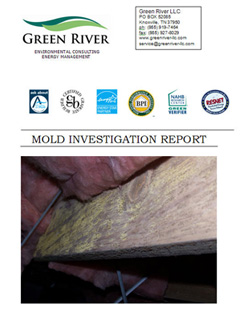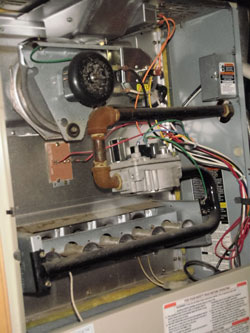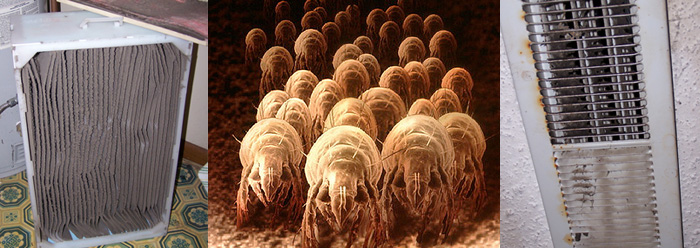What Contaminants are in your home?
Part of the reason we head indoors is to shelter us from nature. Unfortunately, nature sometimes finds its way inside our homes in the form of contaminants – negatively affecting our air quality and posing a danger to our health in the form of these common contaminants.
Mold and Mildew
 Molds are naturally present in indoor and outdoor air. They are not usually a problem indoors unless there is excess moisture. Mildew is a thin, black, or sometimes white, growth produced by mold. Mold and mildew produce allergens, irritants, and potentially toxic substances. Inhaling or touching them may cause severe reactions. You can find more information at: www.epa.gov/mold.
Molds are naturally present in indoor and outdoor air. They are not usually a problem indoors unless there is excess moisture. Mildew is a thin, black, or sometimes white, growth produced by mold. Mold and mildew produce allergens, irritants, and potentially toxic substances. Inhaling or touching them may cause severe reactions. You can find more information at: www.epa.gov/mold.
Dust Mites
Dust mites are the most common cause of allergy from indoor dust. They belong to the family of eight-legged creatures called arachnids that also includes spiders, chiggers and ticks. Dust mites are hardy creatures that live and multiply easily in warm, humid places. High levels of exposure to dust mite are an important factor in the development of asthma in children. People who are allergic to dust mites react to proteins within the bodies and feces of the mites. These particles float into the air when anyone vacuums, walks on a carpet or disturbs bedding, but settle out of the air soon after the disturbance is over. For more information, go to www.epa.gov/asthma/dustmites.html.
Carbon Monoxide and Other Combustion Products
 Combustion products are gases or particles that come from burning materials. In buildings, the major sources are improperly vented or unventilated fuel-burning appliances such as space heaters, woodstoves, gas stoves, water heaters, dryers, and fireplaces. Back drafting can occur when these appliances do not have proper ventilation flues, burn with an improper air/fuel ratio, or do not have adequate fresh air to combust properly.
Combustion products are gases or particles that come from burning materials. In buildings, the major sources are improperly vented or unventilated fuel-burning appliances such as space heaters, woodstoves, gas stoves, water heaters, dryers, and fireplaces. Back drafting can occur when these appliances do not have proper ventilation flues, burn with an improper air/fuel ratio, or do not have adequate fresh air to combust properly.
Gas leaks can also contribute carbon monoxide to breathing zones. Adverse health effects range from mild effects like headache and nausea, to death. Carbon monoxide, a deadly gas, kills over 200 people year in the United States. Other pollutants, such as nitrogen oxides, can cause breathing problems, particularly in sensitive individuals, and can trigger asthma attacks. For more information, go to www.epa.gov/iaq/co.html.
Radon
Radon is a naturally occurring, invisible, odorless gas that comes from natural deposits of uranium in soil, rock, and water. Radon is harmlessly dispersed in outdoor air, but when trapped in buildings, it can be harmful, especially at elevated levels. There are no immediate symptoms from radon exposure. However, long-term radon exposure has been linked to between 7,000 and 30,000 lung cancer deaths each year. Lung cancers usually occur 5 – 25 years after exposure. For more information, go to www.epa.gov/radon.

